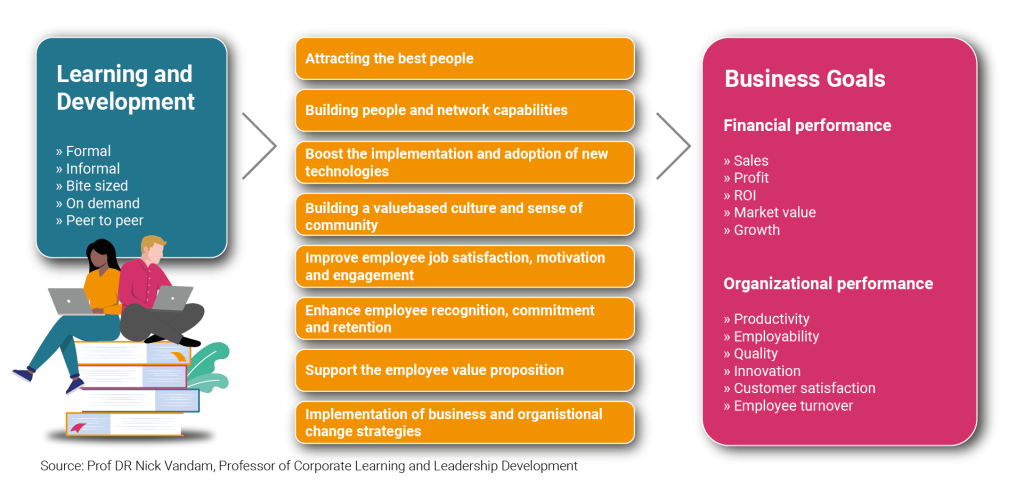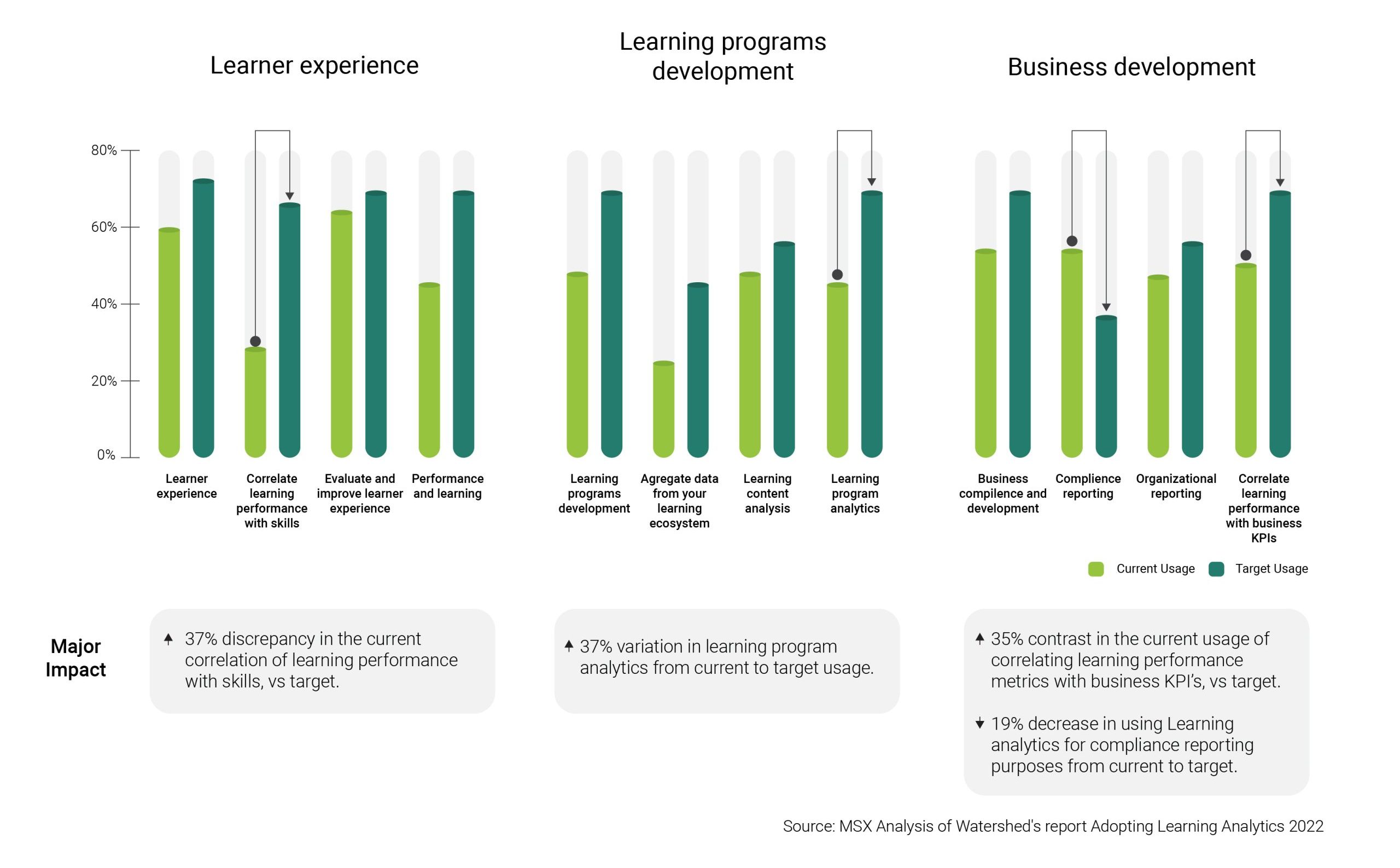
Empowering automotive employees with skills for the future
Creating better learning experiences with data
by David Lowrie, Global Solutions Leader
Very little changed in the world of automotive employee training until relatively recently, when brands began exploring the concept of ‘learning in the flow of work’. The idea itself isn’t new – in 2018, HR analyst and author Josh Bersin coined the term, referring to it as “a new paradigm for corporate training”. But for mobility businesses, the challenge is in its execution. It’s not a simple transition, and as a result, many have been slow to react and reluctant to take learning out of the classroom and put it where it’s really needed – in the palm of the employee’s hand.
Yet more forward-thinking businesses are finding ways to support learners in their everyday roles with better learning approaches that help them meet customer needs. Bite-sized learning content not only enables their workers to learn in the flow of work, but it can also be used to augment the sales process and educate customers. In the mobility industry, new business models and rapid regulatory and technological changes continue to disrupt workers’ job descriptions, so this method of learning is critical. Brands must help employees upskill and reskill quickly, without dragging them away to lengthy training sessions. And most importantly, they must motivate people to learn.
A learning strategy starts with well-chosen processes and tools that help drive ever more effective practices. These come in the form of learning solutions which use data to transform them into powerful tools that can evaluate skills development and measure learning results.
Data offers crucial enlightenment
Organizations implementing learning solutions can often overlook two key components. The first is the real-world business impact of learning, which is identifiable, in part, through learner engagement scores. Other forms of knowledge transfer, such as peer-to-peer learning platforms, are highly effective in boosting these scores and can also inspire learners by displaying real-world KPIs on their home pages.
The second is the use of data to analyze and create more effective learning experiences, while also driving the highest levels of learner engagement. Peer-to-peer learning platforms provide a unique insight into the questions employees ask one another, and with this information, businesses can see whether the content they produce is relevant and up to date. In some instances, organizations can identify product and learning issues before they become problems. It means the brand can be proactive in its approach and this form of learning has inspired the development of additional tools such as digital product libraries.
Social learning unleashes vast potential
Peer-to-peer learning is a form of social learning, which is education through the observation of others. Chat forums or blogs are digital forms of social learning, and while these serve an important purpose – to enable users to collaborate with one another or convey their understanding of a topic – their real value is only revealed when the data they capture is used effectively.
By tapping into their vast knowledge banks, automotive businesses can see the true benefits of these methods. Peer-to-peer learning contributes training, learner engagement and knowledge sharing. It supports the transfer of important product and technical information organically across colleagues and teams, and improves KPIs significantly. Brands are taking advantage of peer-to-peer solutions to meet specific business needs such as those of technical helpdesk, warranty, and sales teams.
This approach has also had a positive impact on employee engagement. Effective peer-to-peer learning empowers the user, and this is reflected in the quality of questions and responses within learning environments. Employees take pride in providing effective responses to their colleagues’ questions, especially when they’re recognized by their employer for their important contribution.

Playing games to understand behaviors
Today’s businesses can add easy-to-consume content such as simulations and games to their learning strategies, moving away from the one-size-fits all approach and catering for different learner demographics and individual styles of working. By analyzing the results of their behaviors, they can apply more relevant learning models that build better learning experiences.
The adoption of Learning analytics
A recent analysis showed that diverse learning data usage in business is still far from optimal adoption levels. Yet, amidst these findings, the standout exception is the utilization of learning analytics with business metrics, signalling a transition from using data primarilv for compliance to a more business-centric analysis approach.
The adoption of Learning analytics
A recent analysis showed that diverse learning data usage in business is still far from optimal adoption levels. Yet, amidst these findings, the standout exception is the utilization of learning analytics with business metrics, signalling a transition from using data primarilv for compliance to a more business-centric analysis approach.
But how can brands motivate employees?
Learner engagement and motivation are crucial for a successful learning strategy, so businesses need to understand what external factors motivate individuals, especially when implementing self-paced learning formats. Success should not relate to the quantity of learning resources individuals can complete or how their results compare with those of others, as this can be demotivating. Instead, organizations should focus on personal goals by setting individuals’ targets against their own previous achievements. By adding business KPI data to the impact of individuals’ personal data, organizations can tap into learners’ intrinsic motivations. This approach, in some brands, has led to learner engagement increases of up to 30%, and had a profound effect on a range of business KPIs.
Personalized experiences are the only way forward
Even today, commonly used approaches such as e-learning can be a little impersonal, especially when content is heavily process based or created within a specific market for general consumption. E-learning that’s developed without thought to the end user’s cultural nuances or leaning styles can really detract from a learner’s engagement.
Branching, however, offers a more personalized approach. This is where the user’s path through the learning content is determined by their actions or choices. Branching tools enable the user to navigate through simulations of real-life business situations. But while these are powerful tools, they are also complex, requiring a high level of interactivity, as well as specific skillsets and substantial costs to create.
Adaptive learning is an equally effective and scalable approach. Adaptive learning platforms adjust their content to match a user’s grasp of a skill or lesson. They offer unique ways to deliver personalized learning because they allow the business to build a more holistic view of the learner’s needs and capabilities. By gathering the data from assessments, learning history, job role definitions, previous learning results and preferences, the organization can construct more personalized journeys.

Extraordinary learning for extraordinary people
The move towards talent management – which aims to attract and retain the most valuable employees – has inspired businesses to embrace a learning approach that goes beyond the traditional OEM curriculum. It now includes external content aimed at developing specialist skills – essential during this period of transformation during which job roles have become more technical or require more specific qualifications. Brands adopting this approach are seeing significant increases in the consumption of learning materials as well as employee retention.
The mobility industry must create opportunities to use this data in ways that drive the business forward. Brands can do this with the help of professional organizations whose specialist teams develop learning strategies that meet both individuals’ needs and organizational requirements. These teams are skilled in analyzing data from learning processes, assessing the needs and behaviors of employees, and building targeted strategies that take advantage of today’s more innovative approaches. By investing in these programs, brands are placing employees at the forefront of their organizations, promoting skills development, building morale, and ultimately, driving greater productivity and business growth.







